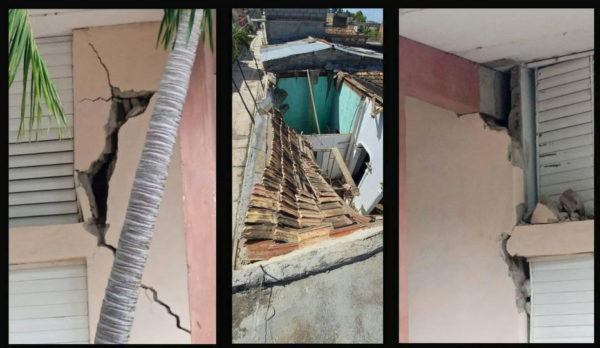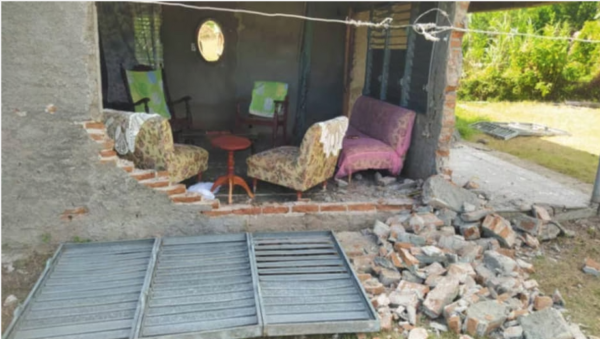Strong Earthquakes Worsen the Crisis in Eastern Cuba

HAVANA TIMES – On the morning of Sunday, November 10, 2024, a pair of high-intensity earthquakes shook the southern part of eastern Cuba. The tremors were recorded by the National Center for Seismological Research (Cenais) and the United States Geological Survey.
The first quake, with a magnitude of 6.0 on the Richter scale, occurred around 10:50 a.m., 35 kilometers from the municipality of Bartolome Maso in Granma. An hour later, at 11:49 a.m., a second tremor, more intense than the previous one —6.7 magnitude— occurred at a depth of 10 kilometers below the sea. The tremors were felt throughout the eastern zone, with reports of people experiencing it even in the central part of the country.

So far, the municipality of Pilon in Granma appears to be the most affected. On social media, local authorities and residents have posted photos of damages and partial collapses of houses and public buildings, as well as fallen electrical poles and landslides. Damage has also been reported in Niquero, Media Luna, Campechuela, Providencia, and Santo Domingo. Several infrastructures in Santiago de Cuba also sustained damage.
Enrique Diego Arango Arias, head of the Cenais’ Seismological Service, stated that a tsunami was unlikely to form in the area.
Just a few days ago, the western part of the country endured the impact of Hurricane Rafael, a Category 3 storm on the Saffir-Simpson scale, which caused severe damage in Havana and Artemisa. Four days later, recovery efforts in those areas are still ongoing. Additionally, Cuba is experiencing its second national blackout in less than a month. On October 21, 2024, another weather phenomenon (Hurricane Oscar) struck eastern Cuba, causing significant destruction and loss of life.
First published in Spanish by El Toque and translated and posted in English by Havana Times.





Blackouts, hurricanes and earthquakes can happen anywhere all over the world. Because of the failed Castro dictatorship, these are setbacks anywhere else but disasters in Cuba. Here in San Francisco, earthquakes are commonplace. Blackouts have also occurred. California is not generally vulnerable to hurricanes but other severe weather does occur. Countries prepare for these problems. Back-up electrical systems, emergency generators, and the Red Cross are put in place for just that reason. That Cuba has become so vulnerable to these disasters is the issue. The Cuba of even 5 years ago was well prepared for severe weather. Even earthquakes were handled well. It’s also impossible to blame the embargo for failing to maintain power plants when at the same time the dictatorship is partnering with foreign hoteliers to build luxury and mostly unoccupied hotels. People who love democracy have been saying this since the Special Period of the early 1990’s: the end of the Castro dictatorship must be near. This time we can only hope that it’s true.